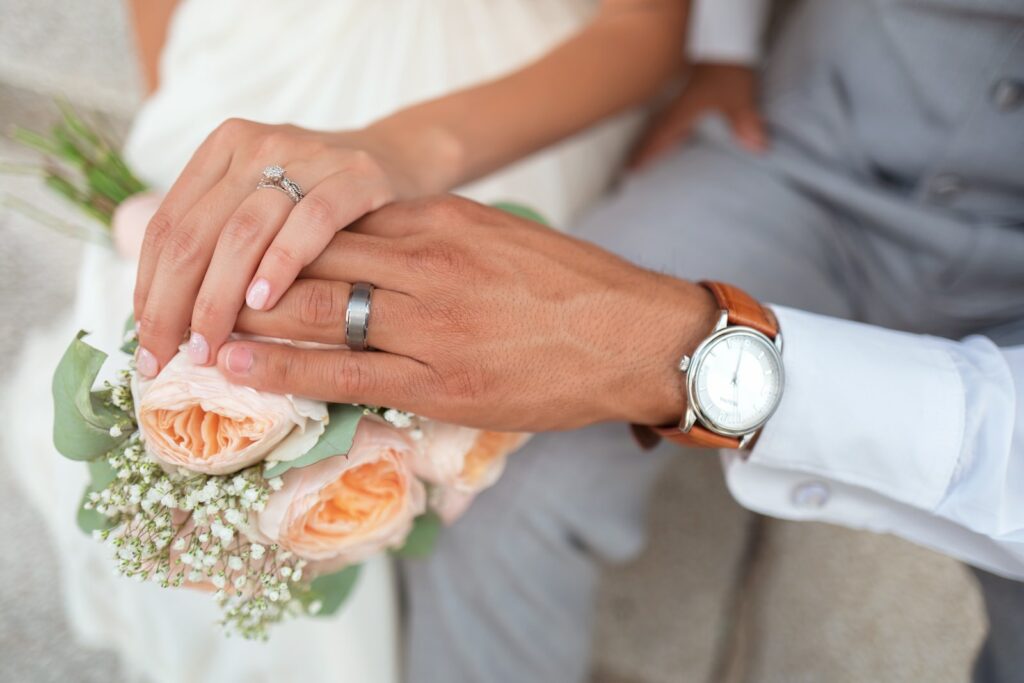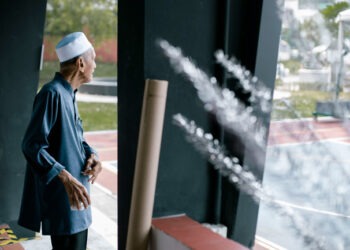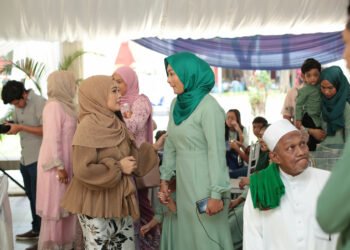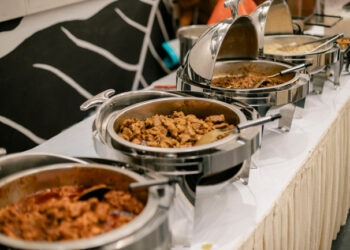Generic Overview of a Malay Wedding – Singapore
A Malay wedding in Singapore is a vibrant and culturally rich celebration that showcases the beauty of traditional customs and values. From the intricate henna designs on the hands of the bride, to the melodious sounds of the kompang drums, every aspect of the ceremony is steeped in meaning and significance.
The festivities typically begin with a solemnization ceremony, where the couple exchange vows in the presence of family and friends. This is followed by a series of rituals and traditions, such as the berinai ceremony, where the bride’s hands are adorned with henna, and the bersanding ceremony, where the couple sit together on an elaborately decorated dais.
Food plays an integral role in a Malay wedding, with a sumptuous feast, known as the kenduri, served to the guests. Traditional Malay delicacies, such as nasi minyak (fragrant rice dish) and rendang (spicy meat dish), are savored by all.
A Malay wedding in Singapore is a colorful and joyous occasion, where love and culture intertwine to create memories that last a lifetime. So, immerse yourself in the captivating world of Malay weddings and experience the richness of this age-old tradition.
Traditional Malay Wedding Customs and Rituals
Malay weddings in Singapore are known for their adherence to traditional customs and rituals that have been passed down through generations. These customs reflect the values of the Malay community and serve to strengthen the bond between the couple and their families.
One of the most important rituals is the ‘merisik‘, where the groom’s family visits the bride’s family to express their intention of marrying their son to the bride. This is followed by the ‘meminang‘, where the groom’s family formally asks for the bride’s hand in marriage. Once the bride’s family accepts the proposal, the couple is considered engaged.
The next step is the ‘berinai‘ ceremony, where the bride’s hands are adorned with intricate henna designs. This is a symbol of beauty and fertility, and it is believed to bring good luck to the couple. The bride’s female relatives and friends also get their hands decorated with henna as a sign of celebration.

Malay Wedding Attire and Decorations
Malay wedding attire is known for its elegance and grandeur, reflecting the importance of the occasion. Here’s a closer look at what the bride and groom traditionally wear:
- Bride:
- Baju Kurung: This is the bride’s main outfit, a loose-fitting blouse paired with a long skirt.
- Luxurious Fabrics: The baju kurung is typically made from silk or other luxurious fabrics, creating a flowing and graceful silhouette.
- Intricate Embellishments: The dress is often adorned with intricate embroidery and beadwork, adding a touch of refinement and cultural significance.
- Groom:
- Baju Melayu: The groom’s attire is known as the baju melayu, a classic outfit symbolizing masculinity.
- Construction: This consists of a loose-fitting shirt and pants, usually made from silk or brocade fabric, for a comfortable and sophisticated look.
- Songkok: The baju melayu is paired with a songkok, a traditional Malay cap that adds a formal touch.
The decorations at a Malay wedding are equally stunning, creating a vibrant and festive atmosphere. The venue is often adorned with:
- Colorful Flowers: Fresh blooms in a variety of colors add a touch of natural beauty and symbolize joy.
- Traditional Fabrics: Rich fabrics like songket, with its intricate gold threads, are used as drapes and tablecloths, reflecting the cultural heritage of the occasion.
- Decorative Items: Symbolic items representing prosperity and good luck may be incorporated into the decor, adding a touch of tradition.
A pelamin, a wedding arch, is set up as a focal point of the ceremony. This elaborate structure is decorated with beautiful fabrics, flowers, and lights, creating a majestic and unforgettable setting for the vows.
Pre-Wedding Preparations and Ceremonies
Pre-Wedding Preparations: Filled with anticipation and excitement, the days leading up to a Malay wedding are a whirlwind of activity. Here are some key highlights:
- Hantaran: This is a significant ceremony where the groom’s family prepares and presents beautifully arranged gifts, known as hantaran, to the bride’s family. These gifts are a symbolic gesture of respect, goodwill, and well-wishes for the couple’s future together. The hantaran can include a variety of items, such as:
- Traditional Malay delicacies: Homemade or specially-purchased sweet and savory dishes represent the groom’s family’s culinary skills and hospitality.
- Fine fabrics and clothing: Batik fabrics, songket (gold-threaded textiles), and beautiful garments for the bride symbolize prosperity and blessings for the newlyweds.
- Jewelry and accessories: Exquisite jewelry pieces and decorative items showcase the value placed on the bride and the importance of the occasion.
- Other symbolic items: Depending on the region and family traditions, the hantaran may also include Qurans, prayer mats, or other items representing faith and blessings for the couple’s journey ahead.
- Traditional Malay delicacies: Homemade or specially-purchased sweet and savory dishes represent the groom’s family’s culinary skills and hospitality.
- Beauty Rituals: Both the bride and groom undergo a series of traditional beauty rituals to prepare for their special day. The bride might indulge in ramuan (herbal baths) and mandi bunga (flower baths) to enhance her natural beauty and bring good luck. She may also visit a beautician for inai (henna application) on her hands and feet, creating intricate and beautiful designs that carry cultural significance. The groom, on the other hand, might experience the urut, a traditional Malay massage, to relax and rejuvenate before the wedding festivities.
This is of course an optional tradition , it is more like getting them prepared mentally in a zen manner.
The Solemnization Ceremony
Akad Nikah: This is the most significant pre-wedding ceremony, considered the heart of a Malay wedding. The akad nikah is the solemnization ceremony where the couple officially becomes husband and wife. It is a religious ceremony officiated by an Imam (Islamic religious leader) in the presence of witnesses. The ceremony typically involves the recitation of Quran verses, the exchange of vows, and the groom presenting the bride with the mas kahwin (dowry), a symbolic token of his commitment and responsibility towards her. The akad nikah is usually held at a mosque, a venue with religious significance, or a specially designated area for the ceremony.
The Wedding Reception
After the solemnization ceremony, the couple and their guests proceed to the wedding reception, which is a grand affair filled with food, music, and entertainment. The reception is usually held in a banquet hall or a specially decorated venue. For example, void decks (an empty space at the ground floor of a regular HDB flat, usually on older estates/flats), multi purpose hall (a dedicated space to hold events for within the estate).
The highlight of the reception is called, bersanding, where the couple sits together on a beautifully decorated dais. This is a symbol of their new status as husband and wife and is a moment for the guests to come forward and offer their blessings and well wishes.
During the reception, guests are treated to a sumptuous feast. Traditional Malay delicacies, such as nasi minyak (fragrant rice dish) and rendang (spicy meat dish), are served, along with a variety of desserts and beverages. The food is meticulously prepared and presented, reflecting the importance of hospitality and generosity in Malay culture.
Malay Wedding Food and Cuisine
Food plays an integral role in a Malay wedding and is a reflection of the rich culinary heritage of the Malay community. Malay cuisine is known for its bold and aromatic flavors, as well as its diverse range of dishes.
At a Malay wedding, guests are treated to a lavish spread of traditional Malay delicacies. Some of the signature dishes mentioned previously. This is often served with a variety of side dishes, such as ayam masak merah (chicken in tomato sauce) and sambal goreng (spicy stir-fried vegetables).
Another popular dish is rendang, a spicy meat dish made with tender chunks of beef or chicken cooked in a rich and flavorful coconut-based sauce. Rendang is often considered the highlight of the meal, and its preparation involves a slow and meticulous cooking process to achieve the perfect balance of flavors.
Here is some of the best caterer’s in Singapore.
Music and Entertainment at Malay Weddings
Music and entertainment are an integral part of a Malay wedding, adding to the festive atmosphere and creating a joyous celebration. One of the most iconic musical elements is the sound of the kompang drums. These traditional Malay drums are played in a rhythmic and synchronized manner, creating a captivating beat that sets the tone for the wedding procession.
In addition to the kompang, live music performances and traditional dance performances are also common at Malay weddings. The music and dance performances showcase the cultural heritage of the Malay community and provide entertainment for the guests.
Conclusion
A Malay wedding in Singapore is a colorful and joyous occasion, where love and culture intertwine to create memories that last a lifetime. From the traditional customs and rituals to the sumptuous food and vibrant entertainment, every aspect of the wedding reflects the rich heritage of the Malay community.
So, immerse yourself in the captivating world of Malay weddings and experience the richness of this age-old tradition. Witness the beauty of the bride’s henna-adorned hands, savor the flavors of traditional Malay cuisine, and dance to the rhythm of the kompang drums. A Malay wedding in Singapore is an experience like no other, and it is sure to leave you with cherished memories and a deeper appreciation for the culture and traditions of the Malay community.



















Discussion about this post